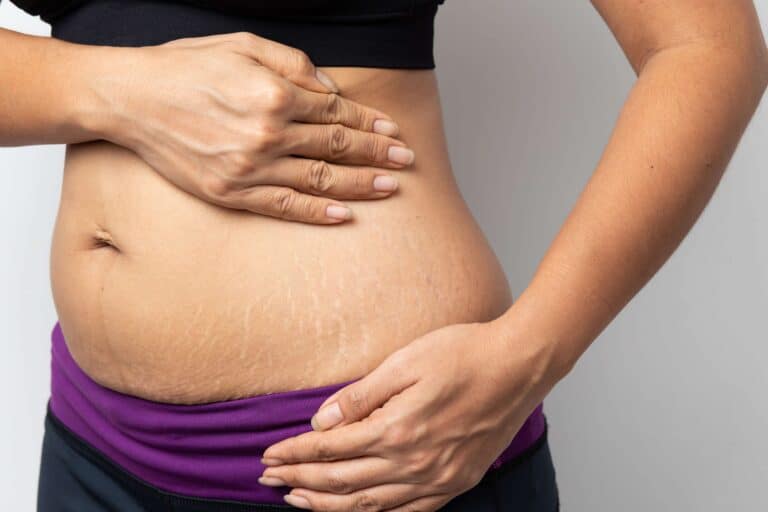Liposuction for Older Adults: Safety, Challenges, and Personalized Care
Key Takeaways
- Liposuction is a surgical procedure that removes unwanted fat from specific areas of the body. It can be performed on older adults, but you must thoroughly consider the safety factors first.
- Age alone is not a contraindication for liposuction; however, age-related changes like skin elasticity and recovery times must be considered when considering the procedure.
- Thorough health evaluations are crucial for seniors who want liposuction. These tests determine if there are any underlying conditions that could increase the risks of surgery.
- Healthcare providers should work with patients to create individual treatment plans. This personalized approach ensures the procedures are in line with everyone’s health and aesthetic objectives.
- Liposuction can dramatically improve your body shape and your self-confidence. Also think about the negatives, such as an increased recovery time and greater risk of complications.
- Knowing what to do and what to avoid will keep you on the right path for the best results. To do that, it requires a firm grasp of the process, tempered expectations, and advice from pros who’ve been in the trenches.
Do you wonder if liposuction is suitable for older adults?
With age come unique factors such as skin elasticity and recovery.
Older adults have a harder time getting liposuction. These challenges include skin elasticity and recovery times.
Personalized plans are key to staying safe.
Health assessments inform decisions and provide peace of mind. These preparations are crucial, experts say.
Liposuction can be appropriate with the proper care. Nevertheless, individual health checks are still important.
Each is a step in the right direction of making wise decisions.
Prioritize safety and tailored care for the best results.
Stay informed and take the right steps for your health journey.
Understanding Liposuction
What Is Liposuction?
Liposuction is a surgical fat removal procedure that reshapes body contours by suctioning fat deposits out.
This cosmetic surgery aims to improve your physical appearance. It’s a self-esteem boost, hitting those hard-to-reach fat pockets that diet and exercise can’t touch.
It is important that people have realistic expectations.
Liposuction won’t take you back to how your body looked at 20 or 30. Surgery can profoundly reshape the body. However, older age is associated with slower and less effective skin retraction compared with younger patients.
Many people 60 or older can still be good candidates for lipo. This is especially the case if they are within 20 to 30 pounds of their ideal weight and have decent skin elasticity.
How Liposuction Works
The liposuction process begins with anesthesia to ensure the patient is comfortable.
The surgeon doesn’t put large incisions in the target areas, which allow for less scarring and faster recovery.
A thin tube called a cannula is then inserted through the incisions to break up and suction out the fat.
The surgeon assumes a vital role in ensuring the procedure is safe and effective.
After surgery, patients have to consider how the procedure will impact their daily lives.
They may not be able to resume regular activities, like working out, for weeks.
Common Areas for Liposuction
Liposuction commonly targets the abdomen, thighs, and arms. Fat distribution differs from person to person, so the ideal treatment areas differ too.
The key is to choose the right areas, as the aim is to achieve a proportionate and visually appealing body shape.
For older adults, consider how the surgery would impact their lifestyle. The recovery may take some time, but don’t worry! The treated areas will appear slimmer in just a few months, giving your body shape a great lift.
This growing popularity among older adults shows its potential benefits when performed on appropriate patients. In fact, a healthy 70-year-old may be an even better candidate for the procedure than an unhealthy 50-year-old.
Age-Related Considerations
How Age Affects Suitability
Age does play an important role in determining if liposuction is safe for older adults and whether it is a good option.
It’s not necessarily chronological age — that’s the point. Instead, physiological age — which takes into account overall health and bodily function — can be a better marker.
For example, a healthy 70-year-old might actually be a better liposuction candidate than an unhealthy 50-year-old. This means doctors pay attention to a person’s health and not just their age.
They wanted younger people, typically in their late teens and early twenties. Older adults can still have the procedure if they meet the required health guidelines.
Older patients, particularly those 65 and older, may face increased risks. They suffer serious complications from things like tummy tucks more than younger patients.
Skin Elasticity in Older Adults
Another important consideration when it comes to liposuction for older adults is skin elasticity.
Skin loses elasticity as people age, which makes a huge difference in the results of the procedure.
This change can make it more difficult for them to attain their desired body contours without a little extra help.
That’s because skin needs to be tight and firm to mold around the new body shape after liposuction, she said.
As such, older patients may need to consider additional procedures, such as skin tightening, to achieve desired results.
The quality of your skin has a major impact on the success of liposuction. This makes a thorough evaluation prior to surgery critical.
Recovery Time and Healing
Recovery after liposuction may take longer for older adults than for younger patients.
However, it tends to take an older patient an additional week or two to fully recover, research has shown.
This longer recovery could be attributed to multiple factors, including the person’s health and lifestyle.
For example, elderly patients must weigh how surgery may affect their daily lives.
It is critical that patients strictly adhere to postoperative care.
Studies show that patients 65 and older have similar risks of severe disease to younger people despite these risk factors.
This is true as long as they eat a healthy diet and follow medical advice.
Health Factors for Older Adults
Assessing Overall Health
If you’re considering liposuction, older adults should first undergo a health assessment. This means healthcare providers will assess their overall candidacy for surgery.
Cardiovascular health is an important consideration; surgeons usually check this, along with body mass index (BMI), before proceeding. A 70-year-old who’s in very good shape is often a better candidate for surgery than a 50-year-old who’s very unhealthy. This shows the importance of individual health more than age alone.
Being educated in body composition and weight management also contributes to evaluating someone for suitability. The ideal candidate is usually within 20 to 30 pounds of their ideal weight. They also have good skin elasticity, as the surgery won’t fully recreate the youthful body of their earlier years.
Regular medical evaluations ensure that potential patients are healthy, which is crucial for a safe procedure.
Evaluating Pre-existing Conditions
Older adults tend to have conditions that can affect their eligibility for liposuction.
Concerns with medical problems such as diabetes or obesity make surgery more complicated. Some medications can affect the outcome of the surgery and recovery.
It’s important to be open with your surgeon about all your medical history. Communication is also important when planning for the surgery and working around medications that could impede your recovery.
It’s also best to try to quit smoking weeks before the procedure, if possible, since this can help healing.
Careful consideration of all these factors makes it more likely that risks are reduced and recovery is easier.
Managing Risks and Complications
Liposuction has its risks, especially for older individuals. Potential complications include infection and delayed healing.
There are strategies to avoid these pitfalls. Proper preoperative preparation, such as lifestyle changes like quitting smoking, can improve recovery outcomes.
Postoperative monitoring is also important so that any issues can be addressed quickly. Older people may require an additional week or two. Their skin retraction post-op is also not as fast as younger patients.
Older patients (65 and up) are just as likely to experience severe complications. It also speaks to the need for personalized care and monitoring to keep it safe and effective.
Personalized Treatment Plans
Importance of Individualized Care
Individualized care is key to ensuring the safety and effectiveness of liposuction in older adults.
A personalized approach can drastically improve safety, providing a recovery experience that’s much more convenient and effective.
Older patients tend to take longer to recover, typically requiring an additional 2-4 weeks compared to younger patients.
Experienced plastic surgeons are essential to creating these personalized plans. Their expertise ensures the unique needs of each patient are met, thus aligning surgical goals with realistic expectations.
Healthcare providers say it’s all about managing expectations.
Clearly, emotional well-being has a significant impact on surgical results, finds a study by the American Society of Plastic Surgeons.

Developing a Comprehensive Health Assessment
In older patients, a complete health assessment is essential when considering liposuction. This might include assessing physical and psychological readiness for surgery.
It’s not just the physical; emotional health plays a huge role in recovery and overall satisfaction. Collaboration between healthcare providers is important to ensure comprehensive assessments.
Surgeons typically look for candidates in their late teens or early twenties. However, seniors can also apply since there are no strict age limits. Candidates are often 60 years old and older.
They do have to stop smoking and get more sleep before the surgery can be performed to improve recovery.
Creating a Tailored Surgical Approach
A tailored surgical approach is required, taking into account each patient’s health and aesthetic objectives.
The type of liposuction used should match the body type and individual needs of the patient.
The experience of the surgeon comes in here because if you have a really skilled surgeon and you have a healthy plan, you’ll do very well.
For older adults, that means opting for techniques with lower risks and faster recovery.
Patients should refrain from strenuous activities for several weeks after surgery to help the healing process.
Older patients often need an extra week or two to recover fully.
This highlights the need for a personalized approach when it comes to their care.
Benefits and Challenges of Liposuction
Potential Benefits for Older Adults
They said liposuction can transform the bodies of older adults.
It effectively eliminates stubborn fat that diets and exercise can’t always remove.
This process has the benefit of permanent results, provided that patients don’t gain weight.
Liposuction creates body contours and makes it easier to move around comfortably.
This lets older adults move a bit more freely in their everyday lives.
Psychologically, the benefits are significant; most people have a bolstered self-image and motivation to be healthier.
Statistics indicate that 80% of patients experience increased self-esteem after the procedure, indicating that the emotional effects are substantial.
Addressing Common Concerns
Older adults might be reluctant to undergo liposuction because they have safety and recovery concerns. It’s essential to answer those questions with thorough education about the process.
You want to let patients know that liposuction can be a safe and effective way to remove fat. When performed by a qualified professional, it can ease their fears.
Knowing that swelling might take weeks to months to go down can help establish realistic expectations for the timeline of results.
It all hinges on educating patients about recovery. That helps them not think they are overdoing it by needing an extra week or two for older patients, and they can make informed choices.
Overcoming Procedural Challenges
Older adults face unique challenges during liposuction, including longer recovery times and the need for careful planning.
Overcoming these involves strategies like ensuring thorough pre-procedure preparation and establishing robust support systems.
Recovery can be easier if patients prioritize resting and avoiding strenuous activities for weeks, which is what they recommend. Support from family and friends is important at this stage.
The procedure can last several hours, depending on how much fat is removed, preparing you to have realistic expectations. This will help you plan accordingly.
Informed Decision-Making
1. Consulting with Medical Professionals
Liposuction is a significant decision, especially for older adults. It’s important for patients to consult qualified healthcare providers to discuss alternatives.
A 50-year-old woman, for instance, should understand precisely what the procedure can and cannot accomplish. These consultations clarify what the potential benefits and risks are.
It’s also smart to seek a second opinion; not only does it build confidence in the approach you’re taking, but it increases your own knowledge base. Professional guidance clarifies expectations and outcomes, helping patients understand what they can realistically anticipate.
Many women over 50, for example, undergo liposuction to improve their appearance and boost their self-esteem. Professional advice empowers them in their decisions.
2. Understanding Potential Outcomes
A clear communication about what can happen is important.
Patients need achievable goals tailored to their specific situation. For example, a healthy 70-year-old might be better for the procedure than an unhealthy 50-year-old. Understanding these nuances is key to satisfaction.
Liposuction can be safe and effective for older adults, helping them achieve a more sculpted and toned appearance.
You can’t overstate the importance of realistic goal setting. When patients have a clear understanding of what to expect, they’re happier when they leave surgery.
In fact, 90% of patients say they’re happy with their results.
3. Evaluating Alternative Options
They should explore non-surgical avenues if liposuction isn’t an option, and patients should recognize this.
Options such as diet changes, exercise, or non-invasive procedures could provide the same benefits, especially for older adults.
By looking at every option for body contouring, I can ensure that people make the best choice possible.
Liposuction is popular with younger people, and it’s becoming more common for patients in their 50s and older.
Educating patients about every option available encourages informed decision-making.
4. Preparing for Post-Surgery Care
Preparing for post-surgery care is essential.
Adhering to prescribed recovery guidelines is crucial for optimal healing.
This means adhering to a healthcare provider’s instructions, making follow-up appointments, and tracking the healing process.
These steps help ensure a smooth recovery and maximize the benefits of the procedure.
Don’t be afraid to start the process of feeling good and being well-prepared.
Knowledge about aftercare is part of being informed and empowered in one’s health journey.
Conclusion
While liposuction can be safe for older adults, it requires care and thought. A big part of that is the health equation. People should get their health checked with a doctor. They should discuss their goals and concerns. A personalized plan is everything.
Older adults should know the benefits and challenges. They need to weigh them up very carefully. Each body is different, and so is each decision. We want to make decisions armed with all the facts. Don’t speed through this. Guessing is not an option.
Talk to experts. They can also guide each step. They can even give you tips on what will likely work best. Knowledge is power here. It aids in making better decisions. Embrace the journey with open eyes and ears.
Write SAFETY MATTERS upper case most. Take the time. Learn. If you don’t, then ask questions. Look for clear answers. This way, older adults can safely enjoy the benefits of liposuction.
Want to know more about it? Call an expert you trust today.
Frequently Asked Questions
What is liposuction?
Liposuction is a cosmetic procedure. It eliminates stubborn fat from different areas of the body. Surgeons use a suction technique for this. It’s commonly done on the stomach, thighs, butt, or arms.
Is liposuction safe for older adults?
Liposuction can be safe for older adults who are in good health. The safety depends on your personal health condition. A medical examination is crucial before moving forward.
What age-related factors should be considered for liposuction?
As you age, the elasticity of your skin decreases. Older adults may have less skin elasticity, affecting results. Recovery time may also take longer. It’s important to talk to a surgeon about the expectations and risks.
What health factors are important for older adults considering liposuction?
For older adults, they should look for cardiovascular health and diabetes, as well as overall fitness. These factors influence recovery and outcome. That requires an in-depth health assessment.
How can personalized treatment plans benefit older adults?
Personalized treatment plans take into account individual health, age, and goals. They maximize safety and satisfaction. Surgeons customize the procedures based on individual needs and conditions.
What are the benefits of liposuction for older adults?
Liposuction can improve body contour and boost confidence. It targets stubborn fat resistant to diet and exercise. Realistic expectations, of course, are key.
What should older adults know before deciding on liposuction?
Older adults must be educated about risks, recovery, and outcomes. A thorough consultation with a qualified surgeon is essential. However, it does help to understand both the benefits and risks to make a more informed decision.





